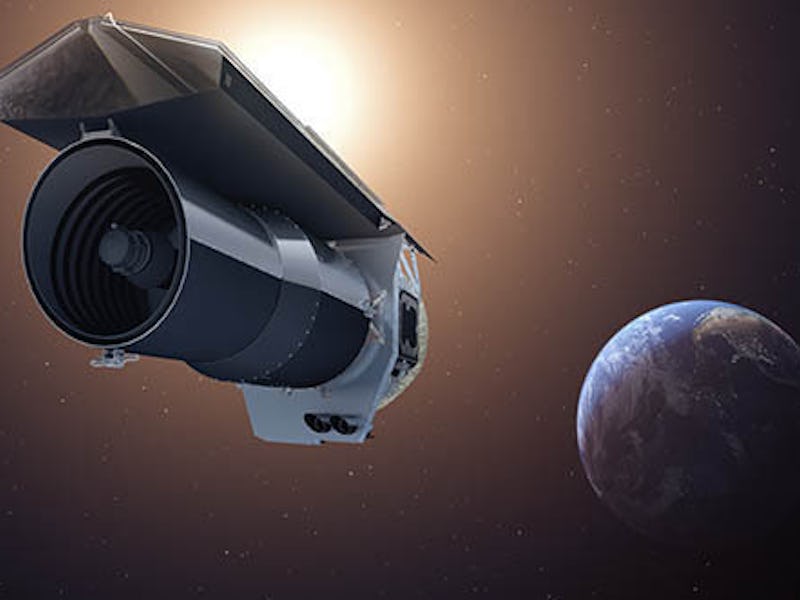On Wednesday, NASA revealed one of the biggest exoplanet discoveries ever made: seven Earth-sized planets orbiting a star 40 light-years away, all of which might be potentially habitable. Though the discovery in incredibly consequential in its own right, it’s worth taking a deep dive at the equipment that made it possible for us to find these babies — because they will likely lead to even more extraordinary findings in no time. Know their names: TRAPPIST, and the Spitzer Space Telescope.
TRAPPIST (Transiting Planets and PlanetesImals Small Telescope), located at ESO’s La Silla Observatory in Chile and operated jointly by the University of Liège in Belgium and the Geneva Observatory in Switzerland, is is a 60-cm robotic telescope which first came online in 2010. It was designed specifically to find ultracool dwarf stars and locate potential planets orbiting them — but it was never really designed to actually find anything.
The telescope started as a prototype for testing out the technology related to a bigger project: SPECULOOS (a Search for Planets Eclipsing Ultracool Stars), which would explore all visible ultracool dwarf stars which are bright and near enough. Only 60 stars were chosen for study — but last year, the telescope’s observations ended up leading to the discovery of three exoplanets orbiting the TRAPPIST-1.
TRAPPIST finds planets by measuring dips in a star’s light output, which could potentially be caused by orbiting planets blocking out light from Earth’s perspective — these events are called transits. It then measures how much of the light is blocked in the transit — the larger the blockage, the larger the planet. TRAPPIST was one of just a few telescopes to catch a glimpse of the planet Eris occulting a star, allowing scientists to get accurate measurements of Eris for the first time and characterizing it as the most massive dwarf planet in the solar system.
This same method was what led to the discovery of TRAPPIST-1 and its exoplanets.
NASA’s Spitzer Space Telescope was the other key to the new findings. Spitzer was launched from Florida’s Cape Canaveral Air Force Base in 2003 into Earth’s orbit. The 85-cm telescope and is able to detect infrared light from distant celestial bodies like galaxies, stellar nurseries, and even fainter objects like faint dwarf stars. In fact, Spitzer was the first telescope to detect light from a planet outside of our solar system. It also gave us the most complete map of the Milky Way Galaxy to date.
Spitzer’s observations are what helped to provide some more detail to the planets TRAPPIST initially observed, and led to some conclusions about size, composition, and distance from the sun. It’s the reason scientists have determined that at least three of the planets reside in a star’s so-called habitable zone — where liquid surface has the best chance of pooling up and fostering a livable environment.
Both Spitzer and TRAPPIST are essential tools as scientists dig deeper into the universe, hunting for any signs of life and finally answering the burning question: are we really alone? Wednesday’s announcement is a clear indication these two instruments will play an incredibly important role in the search for another Earth.
